In the given figure a plano-concave lens is placed on a paper on which a flower is drawn. How far above its actual position does the flower appear to be ?
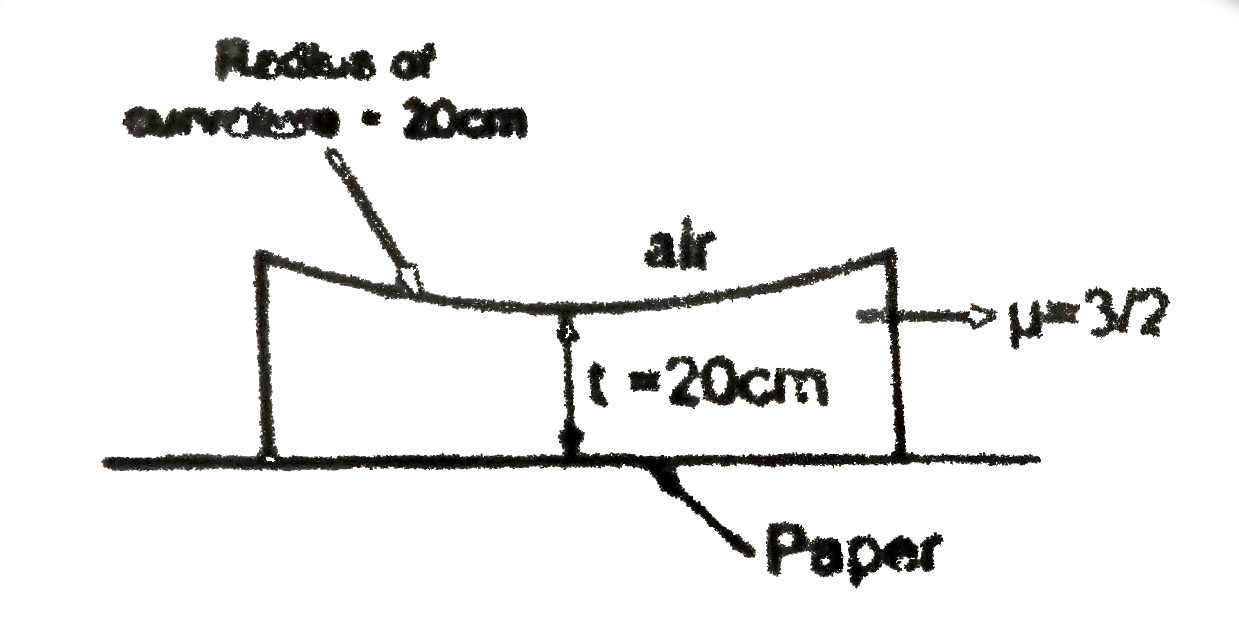
10 cm
15 cm
50 cm
none of these
The correct Answer is:A

Considering refraction at the curved surface,
applying
i.e., 10 cm below the curved surface or 10cm above the actual position of flower.
Topper's Solved these Questions
Similar Questions
In Figure, a fish watcher watches a fish through a 3.0 cm thick glass wall of a fish tank. The watcher is in level with the fish, the index of refraction of the glass is 8/5 and that of the water 4/3 .
a. To the fish, how far away does the watcher appear to be ?
b. To the watcher, how far away does the fish appear to be ?
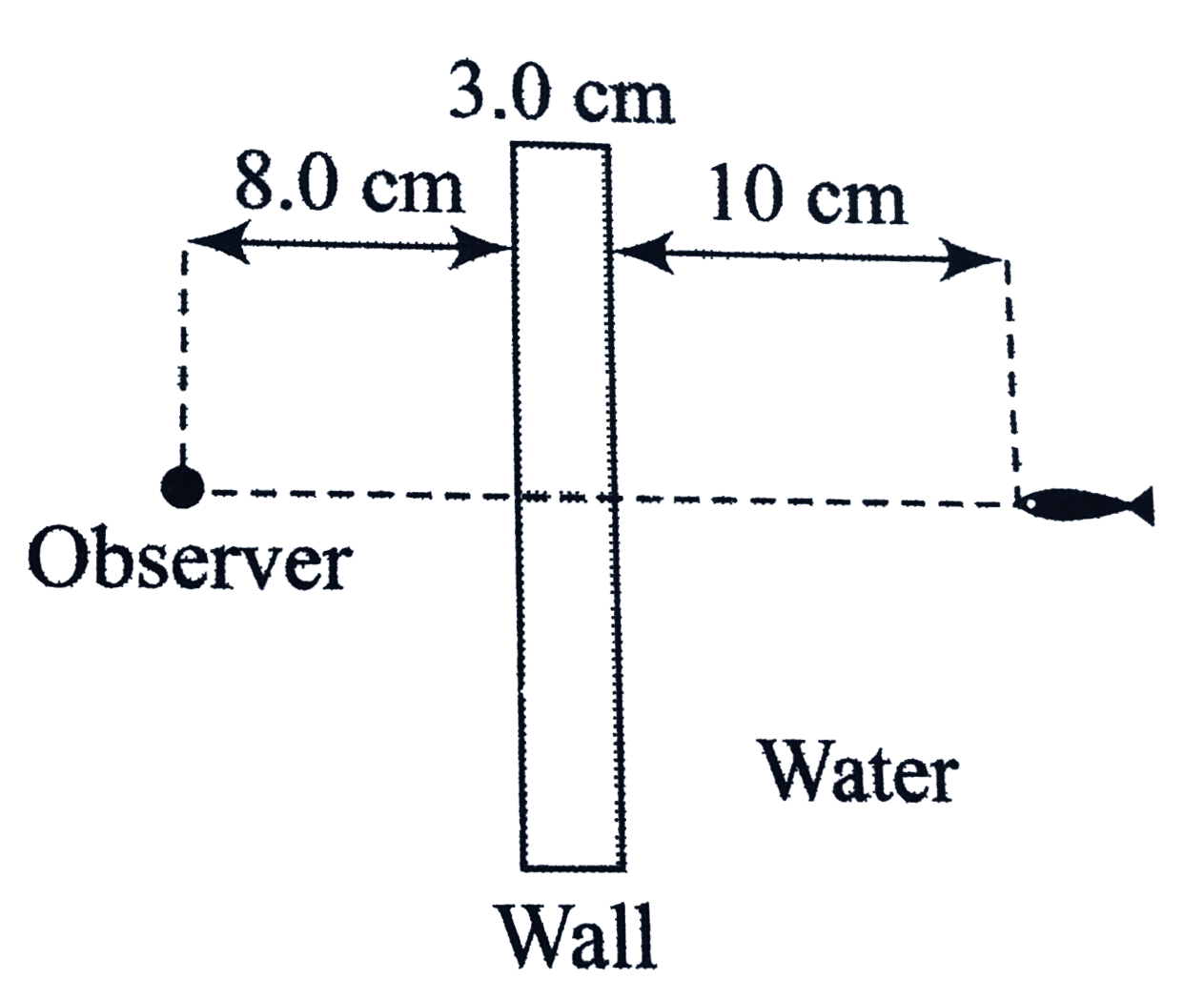
View SolutionThe power of a plano-convex lens is P. If this lens is cut longitudinally along its principal axis into two equal parts and then they are joined as given in the figure. The power of combination will be :

View Solution
Knowledge Check
How does the bee know which flower has nectar?
Asmell, color and pattern, electrical field, etc. that allow honeybees to find nectarBbecause of Imprinting, bees can detect nectarCbecause of sun direction, bees can detect nectarDbecause of memory, bees can detect nectarThe word ‘’KVPY’’ is written on a board and viewed through different lense such that board is at a distance beyond the focal length of the lens.
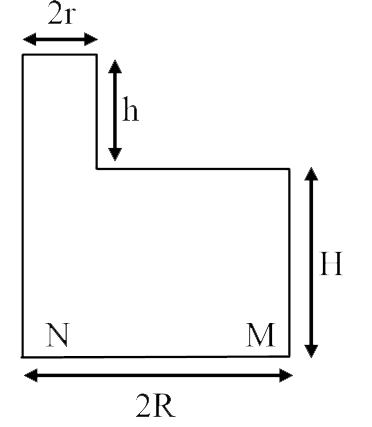
lgnorging magnification effects, consider the following statements
(I) Image (i) has been viewed from the planar side of a plano-convex lens and image (ii) from the convex side of a plano-convex lens.
(II) Image (i) has been viewed from the concave side of a plano-concave lens and image (ii) from the planar side of a plano-convex lens.
(iii) Image (i) has been viewed from the cocave side of a plano-concave lens and image (ii) from the planar side of a plano-convex lens.
(iv) Image (i) has been viewed from the planar side of a plano-concave lens and image (ii) from the convex side of a plano-convex lens.
Which of the above statements are correct ?AAll four.BOnly (III).COnly (IV).DOnly (II), (III) and (IV).The word ‘’KVPY’’ is written on a board and viewed through different lense such that board is at a distance beyond the focal length of the lens.
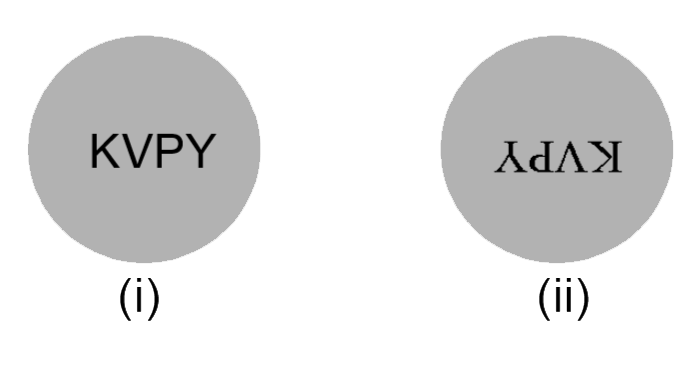
lgnorging magnification effects, consider the following statements
(I) Image (i) has been viewed from the planar side of a plano-convex lens and image (ii) from the planar side of a plano-convex lens.
(II) Image (i) has been viewed from the concave side of a plano-concave lens and image (ii) from the convex side of a plano-convex lens.
(iii) Image (i) has been viewed from the cocave side of a plano-concave lens and image (ii) from the planar side of a plano-convex lens.
(iv) Image (i) has been viewed from the planar side of a plano-concave lens and image (ii) from the convex side of a plano-convex lens.
Which of the above statements are correct ?AOnly (III)BOnly (IV)COnly (III) and (IV).DAll four.
Where does triple fusion take place in a flowering plant? Why is it so called? Mention its significance.
View SolutionIn the given figure, the radius of curvature of curved surface for both the plano-convex and plano-concave lens is 10 cm and refractive index for both is 1.5. The location of the final image after all the refractions through lenses is
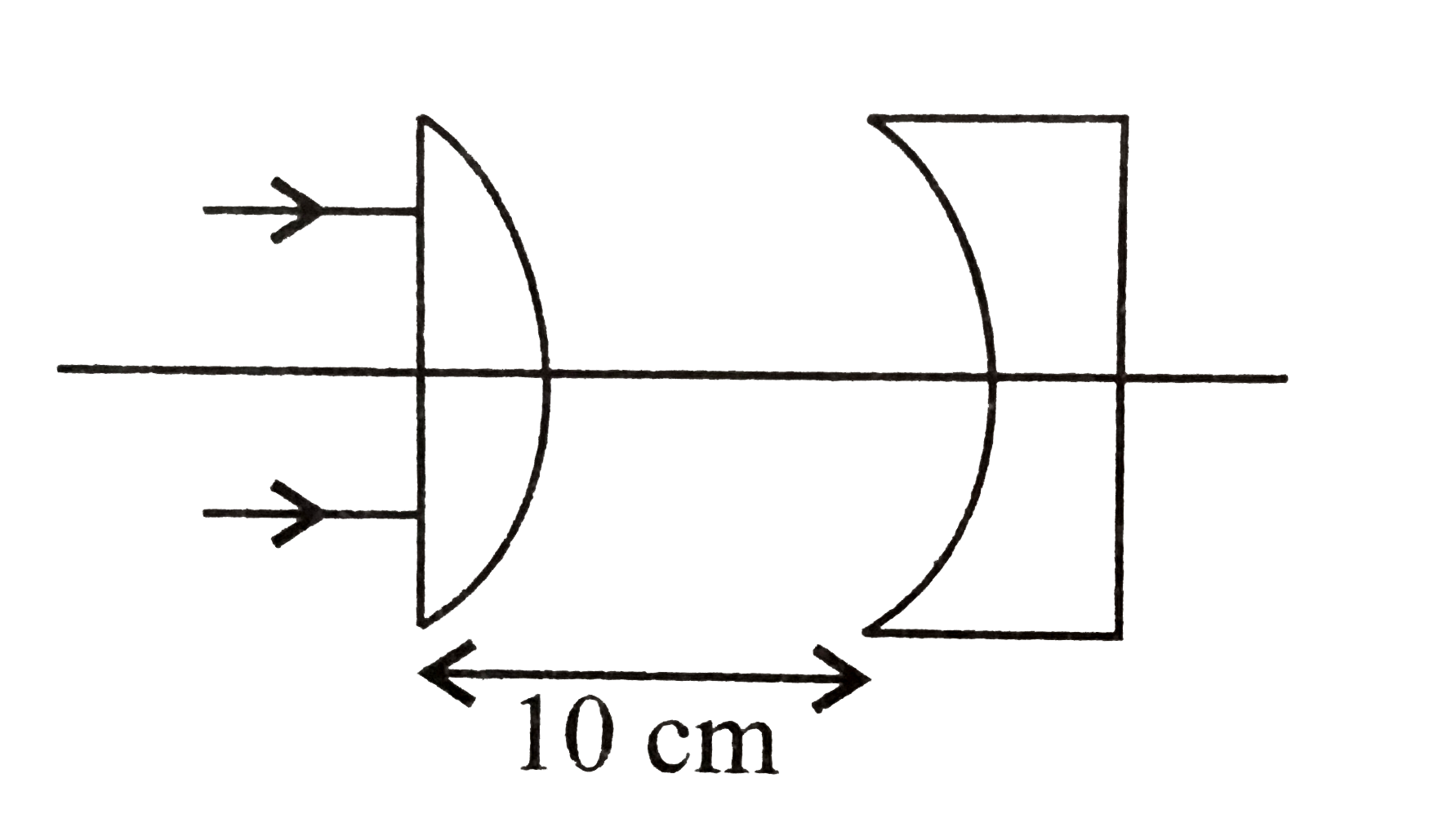
View SolutionA hemispherieal paper weight contains a small flower on its axis of symmetry at a distance of 4 cm from its flat surface. Where is the flower appears to an observer when he looks at it along the axis of symmetry from the top? (Index of refraction of glass = 1.5)

View SolutionIn which part of the female flower does fertilisation take place?
View SolutionIn which part of the female flower does fertilisation take place?
View Solution
